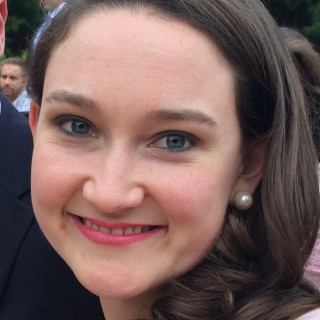
Neurosurgeons tend to be a stylishly battered bunch. We pride ourselves on our critical thinking skills, our ability to see through bias, and our prowess at identifying flaws in scientific methods, surgical techniques, each other, and ourselves. As I step off the escalator at Moscone West in downtown San Francisco, home to the 2019 Congress of Neurological Surgeons (CNS) Annual Meeting, I see black and blue tailored suits dispersed in solo islands across the mezzanine. Ebony and indigo are our colors. Given the paths we each take to get into this building in the first place, if our amygdalae, the emotional control centers at the forefront of our temporal lobes, could turn colors like our skin, one would find a large volume of black and blue.
Sitting with his laptop on a Medtronic square box, I meet Mike Stellon, a medical student from George Washington University who is here to give his first talk at a national conference. He is discussing laser ablation for tuberous sclerosis in epileptogenic patients. He is clearly passionate about the topic, and his passion engenders a certain romantic nostalgia for the joy of scientific discovery, a time before the age of publish or perish.
Scanning badges at the entrance to an afternoon symposium, I meet Rima Rindler, MD, a sixth-year resident at Emory and aspiring skull base surgeon on maternity leave. (Her toddler and infant are home in Georgia with their dad and grandparents.) She paid her own way to be here, as her program only funds residents who are presenting an abstract or talk. In reflection, she states that because of CNS registration fees, “It is cost-prohibitive for most residents [to attend].” In order to have one’s residency program fund one’s attendance, residents must be chosen by the CNS to present a research abstract or talk. “We have to earn it, which I think is fair,” Dr. Rindler states.
Christina Jackson, MD, another aspiring skull base surgeon, joins us at the entrance to the symposium. She tells us she wouldn’t be there were it not for the research grant that she obtained on her own accord. When I ask her what she’s learned at the conference so far, she tells me that she appreciated the updates on radiosurgery for tumor. She also liked the updates on virus immunotherapy as a neurooncology treatment, despite the fact that, so far, it has yet to prove effective.
A baby catches the corner of my eye, and I turn to see several neurosurgeons cooing over the youngest member in the room. Dad, Jeremy Hosein, a sixth-year resident from the University of Colorado, is here with his baby, Theodore, and his wife, also an MD, who stands beside him sporting a baby Bjorn. He is clearly proud to be a neurosurgeon dad. When I ask him if he and his wife looked into using the CNS childcare program (for the first time ever, CNS actively encouraged attendance of neurosurgeons and their families this year), he responded, “There’s childcare here?” He then told me that he knew of a neurosurgeon mom attending who had brought along her personal au pair.
The SANs resident challenge begins. Four teams of two, but University of Illinois, Chicago’s team is the only team of women surgeons. Mandana Behbahani, MD and Laura McGuire, MD are up against the University of Kansas, University of Kentucky, and Jefferson University. The She Docs dominate the competition, their mentor, Dr. Konstentin Slavin sitting directly behind them and vehemently cheering them on.
On the second floor mezzanine, I meet Dr. Alexander Khalessi of the University of California San Diego, the 2019 Annual Meeting Chair. Dr. Khalessi looks younger than his age and comes across with poise and ease that sets him apart. I ask him what he hopes attendees gain from the conference. He launches into a report of his colleague Dr. Sharona Ben-Haim’s electrophysiological research on the brain mechanisms of compassion. “There has been this seismic explosion in other areas of medicine and in other industries like computational science that put the sort of research that Dr. Ben-Haim is doing into real perspective,” Dr. Khalessi smiles. The Congress aims to engage clinical neurosurgery with those advances. “The people who are going to make real differences in our specialty are the people who are coming up with solutions to much larger problems, and it is our job to apply those solutions to issues that have been historically managed by neurosurgeons.” Embolization of the middle meningeal artery for treatment of chronic subdural hematomas, computational analyses in deep brain stimulation and advances in surgical neurooncology are some of the examples he cites.
At the evening’s Opening Reception, Dr. Julian Bailes practically jumps out of the movie Concussion to discuss the “convincing evidence” that chronic traumatic encephalopathy (CTE) is directly correlated to high impact sports. He concedes that, despite seeing patterns in exposure, symptoms and brain pathology, CTE is not a well-understood disease. One does not have to have a history of concussion to be diagnosed with it: certain people appear to be predisposed to it, and there seems to be a dose-response curve with number of high velocity impacts and development of the disease, regardless of level of play.
For the rebuttal argument, Dr. Peter Cummings, neuropathologist and co-author of the book "Brainwashed: The Bad Science Behind CTE and the Plot to Destroy Football," points out that CTE is a tau-staining pattern in the depths of brain sulci, and not unique to patients with a history of repetitive head trauma. He highlights that given the science at hand, there is no clear association between symptoms and pathology. In an attempt to debunk the perceived association between CTE and suicide, he points out that of the 27,000 former NFL football players, only 27 have committed suicide. One could argue, being a neurosurgeon is more dangerous.
Finally, Lucy Kalanithi, MD takes the stage for a moderated discussion about her late husband, Paul Kalanithi, MD’s book "When Breath Becomes Air." “There is a fallibility in surgery, and a lot that goes unspoken about the fallibility that we can’t fix,” Kalanithi implores, her twinkling eyes gazing out on the more than 2,000 attendees in the audience. “Practicing medicine is terrible and wonderful at the same time,” she acknowledges. “When you do something hard, there is a joy in that.” She summons Victor Frankel’s message, “Suffering ceases to be suffering the moment it finds meaning.” The three pillars of meaning being work, love, and how we respond to our suffering, “and there is meaning in persisting.”
At the Opening Reception, I meet Dr. Bamidele Adebayo from Nigeria. He singlehandedly serves a population of 5 million Nigerians, performing brain and spine surgeries with extremely limited resources. He pulls up a photo of a recent large skull base meningioma he resected with loops and a headlamp. Sixteen hours of persistence and the patient was tumor free on the path to a full recovery.
Be it in Nigeria, the United States, or any other place in the world, neurosurgery is a field rife with emotional ups and downs, personal and professional trials and tribulations. For all the joys one will experience, there will be at least an equal number of traumas and painstaking experiences.
At this year’s 2019 CNS Annual Meeting, there was a shift in the sea of black and blue: youthful aspirations, increased diversity, and for the first time ever, babies. Criticisms and controversies may always pervade the field, and now, so too, does the study of human compassion. There is joy to be discovered among all things black and blue. As we were reminded this year, neurosurgeons have feelings, too.







